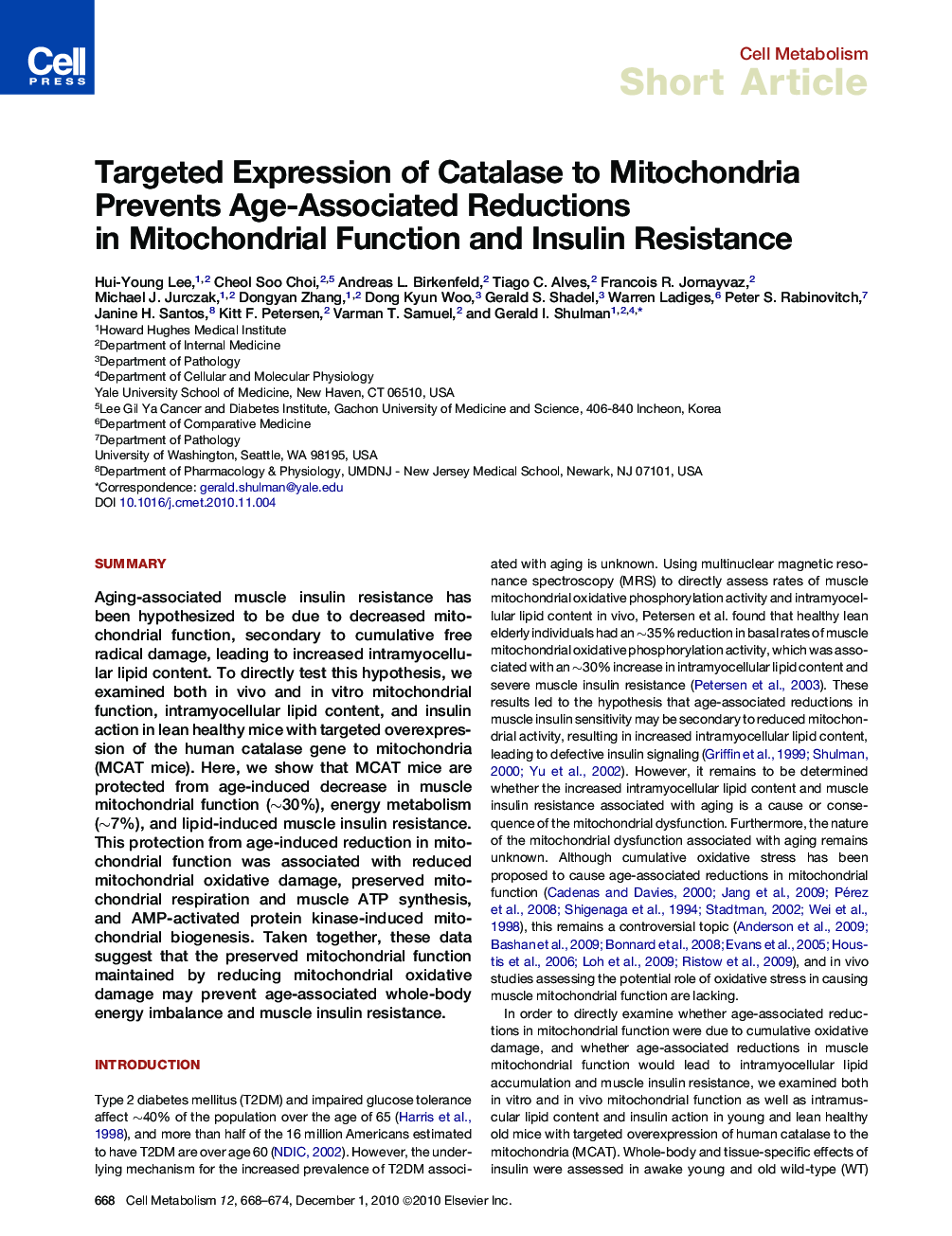| Article ID | Journal | Published Year | Pages | File Type |
|---|---|---|---|---|
| 2793300 | Cell Metabolism | 2010 | 7 Pages |
SummaryAging-associated muscle insulin resistance has been hypothesized to be due to decreased mitochondrial function, secondary to cumulative free radical damage, leading to increased intramyocellular lipid content. To directly test this hypothesis, we examined both in vivo and in vitro mitochondrial function, intramyocellular lipid content, and insulin action in lean healthy mice with targeted overexpression of the human catalase gene to mitochondria (MCAT mice). Here, we show that MCAT mice are protected from age-induced decrease in muscle mitochondrial function (∼30%), energy metabolism (∼7%), and lipid-induced muscle insulin resistance. This protection from age-induced reduction in mitochondrial function was associated with reduced mitochondrial oxidative damage, preserved mitochondrial respiration and muscle ATP synthesis, and AMP-activated protein kinase-induced mitochondrial biogenesis. Taken together, these data suggest that the preserved mitochondrial function maintained by reducing mitochondrial oxidative damage may prevent age-associated whole-body energy imbalance and muscle insulin resistance.
Graphical AbstractFigure optionsDownload full-size imageDownload high-quality image (65 K)Download as PowerPoint slideHighlights► Mitochondrial catalase prevents age-associated reductions in mitochondrial function in vivo ► Mitochondrial catalase prevents age-associated increases in DAG, PKCθ, and insulin resistance ► Mitochondrial catalase prevents age-associated decreases in AMPK and mitochondrial biogenesis
